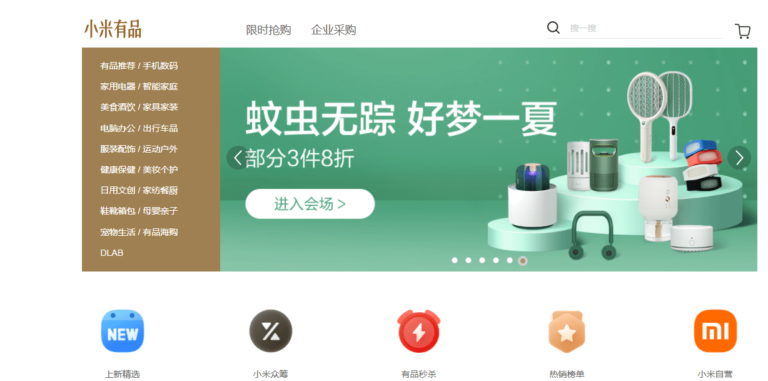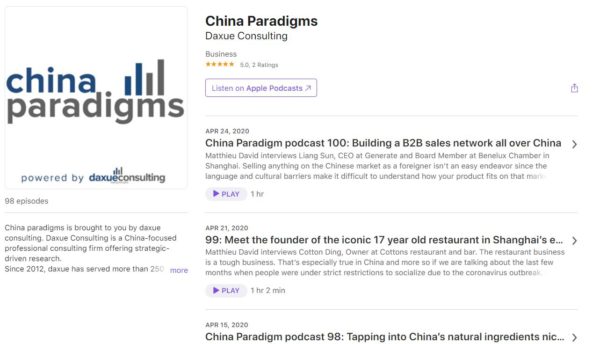Direct to consumers (DTC) is a business model when a manufacturer sells product directly to the end consumer, bypassing all intermediaries. It also includes a wide range of instruments which help to be closer to the consumers. DTC in China makes use of four types of social e-commerce, Pinduoduo – social e-commerce, WeChat – one of biggest app in China in terms of users, Douyin and Weibo. Alternatively, many brands reach consumers directly by launching their own e-commerce site dedicated to selling their own products, this is known as brand.com or, in China, brand.cn. The DTC business model is a form method of brand independence, a strategy which puts the destiny of brands in their own hands rather than third party players.
The benefit of DTC is that it allows brands to maintain control over the sales process and build close relationships with customers. On the one hand, a DTC strategy allows businesses to increase profits and gain access to consumer information and the ability to optimize your brand. But on the other hand, it also complicates the operation, as it is necessary to create supply and delivery channels, as well as manage the return of goods.
DTC is a new kind of consumer experience, which cannot be ignored by modern brands. Originally, DTC merchandise was a staple of small businesses, and now such global corporations like Airbnb or Nike use it. Nike, for example, got 40% of their China revenue from DTC channels in 2019.
DTC differs from e-commerce platforms.
On standard e-commerce platforms, the platform itself, not the brand, controls the customer-company relationship. That means brands usually do not have to deal with shipping and delivery – they let e-commerce platform to take care of this. However, it deprives brands from closer relations with consumers. Profitability on traditional e-commerce platforms often depends on highly specialized methods. Moreover, these sales channels need to continually optimize both paid and organic searches. Such problem is not acute for the DTC model. Having its own website for online selling will guarantee the deeper understanding of customers and the usage of marketing tools to attract them.
Advantages of DTC in China at a glance
- More effective and quick responses to user needs. As the number of links is reduced, the distance with consumers is shorter, and direct communication with consumers can be more effective.
- Improvement of market efficiency. Under the DTC model, companies can quickly reach low-tier consumers through online platforms, and use data to make precise market selection and layout to improve the efficiency.
- The improvement of consumers’ experience. By increasing the integration of online and offline, it is possible to break the time and space constraints of consumers’ purchases.
What is important to know for DTC in China
According to a survey conducted by the China Sporting Goods Industry Federation with a sample volume of 98 channel vendors, 59% of companies believe that they should pay more attention to service quality improvement. 45% of vendors began to realize the importance of creating a system to run the production and delivery on their own.
Brands using DTC need to prioritize understanding the Chinese consumer
The ability to communicate directly with the consumer and learn about their needs is the main feature of DTC. Based on this strategy, brands can build the perfect marketing plan. Collecting and processing feedback is the easiest way to interact with a consumer.
For instance, McDonalds paid $300 million US to establish communication with consumers all over the world. That is how much the company paid to develop technologies for the analysis of personal data from Dynamic Yield.
Gen Z and millennials: The key consumers of DTC brands in China
Millennials and Generation Z in China have become the recognized main force of consumption. They grew up with the Internet in the era of material abundance and embrace innovative things.
Traditional brands and monopoly giants which lack innovative product experience can no-longer match the desires of the younger generation. DTC brands in China often have strong personalities and value-for-money connotations, telling brand stories with a clear attitude. This attracts young consumers in China.
Elements of successful DTC strategy in China
The introduction of DTC is not necessarily an expensive or laborious task. If your company is considering expanding your product into DTC sales, there are three main elements required to create an effective DTC strategy in China.
1. Find a reliable logistic partner for DTC in China
The logistics of the DTC model is simple: customers order products and the brand ships directly to them. However, this means that the brand is in charge of logistics rather than relying on an e-commerce partner. When choosing a logistics partner, reliability, flexibility and cost-effectiveness are key. You need to know that you can rely on them to deliver on time and provide real-time updates on delays or other issues.
2. Install a customer data platform
Customer data is only useful if you can organize and analyze it strategically. A customer data platform (CDP) is a central database that connects information from different data sources. It covers social media, email marketing, and advertising campaigns. When you have a unified view of all customer data across multiple channels and multiple brands, you can optimize your marketing strategy and provide a more personalized customer experience. You can also avoid costly or time-consuming errors, such as inadvertently violating data protection regulations or targeting duplicate customer data.
3. Create DTC model with channel redirection
Some brands conduct the entire sales process on their digital platform. They then refer customers to specific distributors to complete the sales. In this way, the company can still build relationships with the customers and gain a deeper understanding of them.
Case studies of DTC brands in China
Youpin: Xiaomi’s DTC platform which attracts overseas influencers
One of the biggest platforms for DTC in China is Youpin. It is a part of the Xiaomi ecosystem with complete chain capabilities such as design, manufacturing, sales, logistics, and after-sales. The products sold on the platform cover such spheres as household, daily use, dining and kitchen, home appliances, and other consumer goods categories. Youpin is a new type of social cross-border e-commerce platform that uses three core functions: cross-border scramble to attract traffic, social chat interception, and short video live streaming to break the original e-commerce model.

In 2021, Youpin has signed more than 5,000 overseas influencers who are active on platforms such as YouTube, TikTok, and Instagram. The use of influencer cooperation has reduced traffic costs and established a large-scale and cost-effective overseas marketing matrix. Youpin’s rush to earn media matrix will adhere to the strategy of serving DTC brands in China overseas. It helps Chinese companies to establish channels in the West. It will give them an opportunity to expand sales scale, create production cost advantages, and grasp the initiative in the brand market.
Pandaw: Chinese DTC eye-care brand
In early 2017, Pandaw created its own operating group, Tmall. In the same year, the Chinese DTCbrand also opened flagship stores on Xiaohongshu. This helped the brand to gather consumer information and use it to build its own DTC store.
Pandaw focuses on the eye care category. This area is monopolized by expensive products such as Estee Lauder and Lancome. However, the prices of these brands are closely related to their distribution patterns.
Pandaw, backed by its global supply chain and technological reserves, as well as the DTC model, has competed successfully with top foreign brands.

Anker: Building ecosystem for DTC in China

Anker Innovations is a Chinese electronics company that manufactures computer and mobile devices, including phone chargers, power supplies, headphones, earphones. Anker even made Kantar and Google’s 2021 “Brands in China” report along with SHEIN According to this report, Anker’s brand power increased by 26% year-on-year.
This brand believes that a large enterprise has the advantage of a supply chain. As a representative of a DTC model, Anker targets major consumer groups easily and responds quickly to new market demands.
At first, Anker went through the process from design to production and then to direct delivery of goods. Before creating its ecommerce platform and shopping sites, Anker tried offline distribution channels in emerging markets such as Southeast Asia, the Middle East, Eastern Europe or Africa.
What brands should know about DTC in China
- DTC allows brands to be closer to consumer, and, consequently improve their marketing and performance
- The DTC model requires the system of warehouses and delivery partners for smooth operation, so the upfront costs are quite heavy.
- DTC in China has a significant potential thanks to Gen-Z’s growing demands
- Companies should combine their own development stages and capability systems to think differently and focus on the innovation of the direct-to-consumer model
Learn something new? Stay updated on the Chinese market by following our WeChat, scan the QR code below, or subscribe to our newsletter

Learn more about strategies to help your brand not rely on third parties
Listen to over 100 China entrepreneur stories on China Paradigms, the China business podcast
Listen to China Paradigm on Apple Podcast






